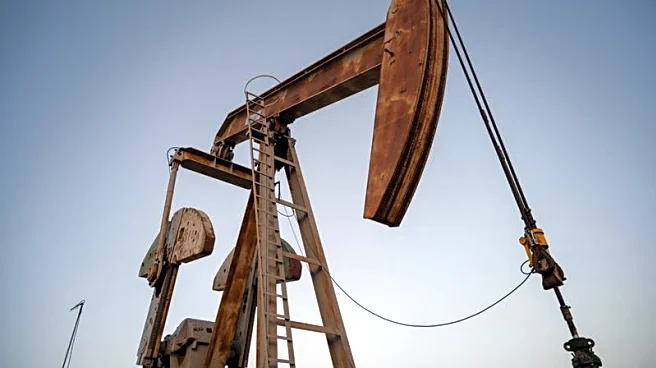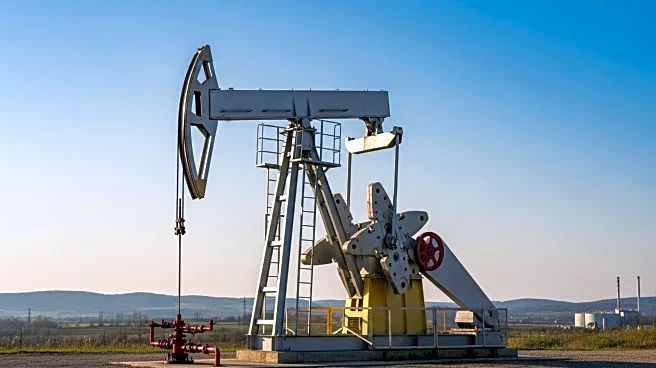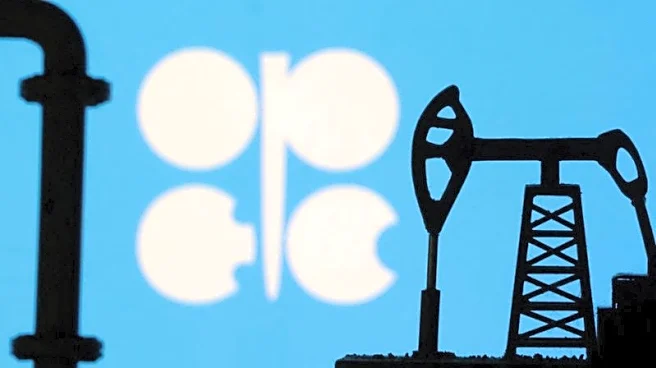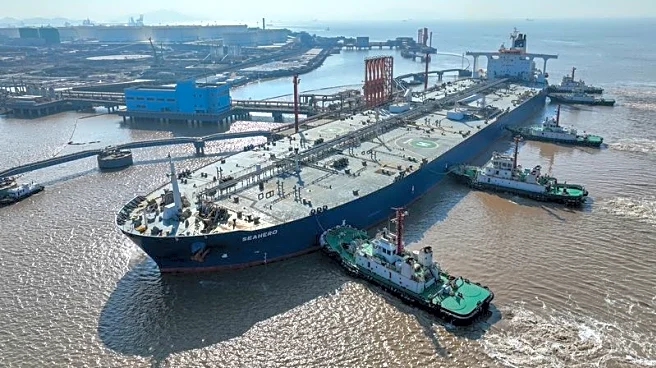What's Happening?
The U.S. Energy Information Administration (EIA) has updated its crude oil production forecast in the October Short-Term Energy Outlook. This revision follows new data indicating that U.S. crude oil production reached a record high of 13.6 million barrels per day (bpd) in July 2025. The EIA now anticipates that production will average 13.5 million bpd in both 2025 and 2026, slightly higher than previous estimates. Despite softening oil prices, U.S. producers are maintaining near-record activity levels. Global oil prices are expected to trend lower as inventories build through 2026, with Brent crude projected to average $69 per barrel in 2025 and $52 per barrel in 2026. The EIA also noted potential supply disruptions due to geopolitical tensions and infrastructure issues.
Why It's Important?
The revised forecast by the EIA highlights the resilience of U.S. oil production amidst fluctuating global oil prices. This sustained production level is crucial for the U.S. economy, as it supports energy independence and influences global oil markets. The forecasted lower global oil prices could benefit consumers and industries reliant on oil, potentially reducing costs. However, the geopolitical uncertainties and infrastructure challenges pose risks to stable supply chains. The U.S. maintaining high production levels could also impact OPEC+ strategies and global oil pricing dynamics.
What's Next?
The EIA's forecast suggests continued monitoring of geopolitical events and infrastructure developments that could affect oil supply. U.S. producers may need to adapt to changing market conditions, including potential shifts in demand and pricing. Stakeholders in the energy sector will likely focus on optimizing production efficiency and exploring alternative energy sources to mitigate risks associated with oil price volatility.
Beyond the Headlines
The ongoing geopolitical tensions, such as Ukraine's attacks on Russian energy infrastructure, could have broader implications for international relations and energy security. Additionally, China's crude stockpiling behavior may influence global supply and demand dynamics, affecting long-term market stability.












